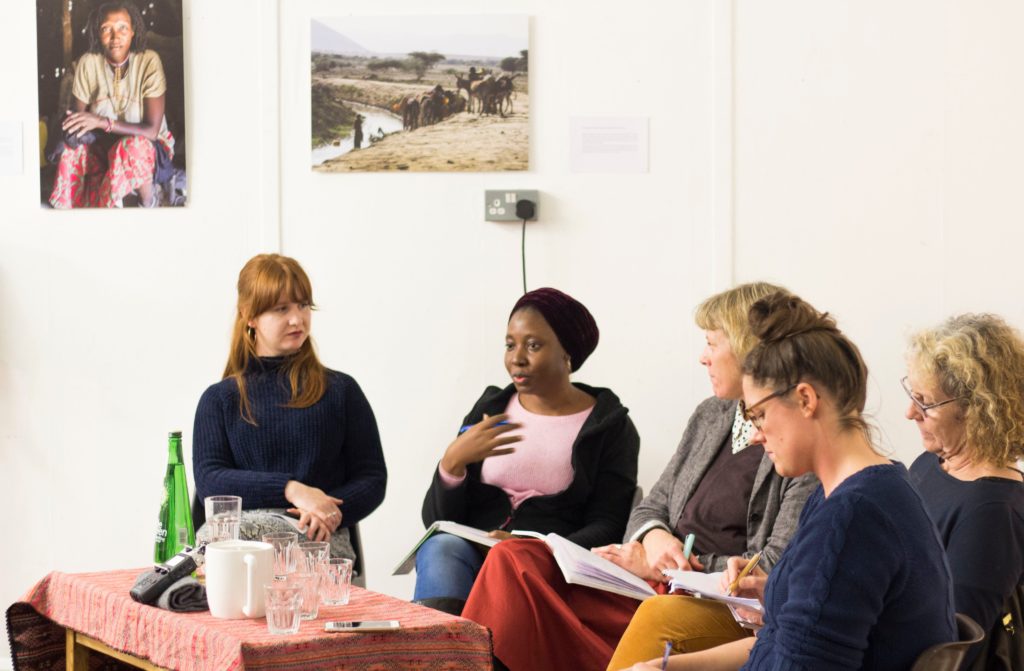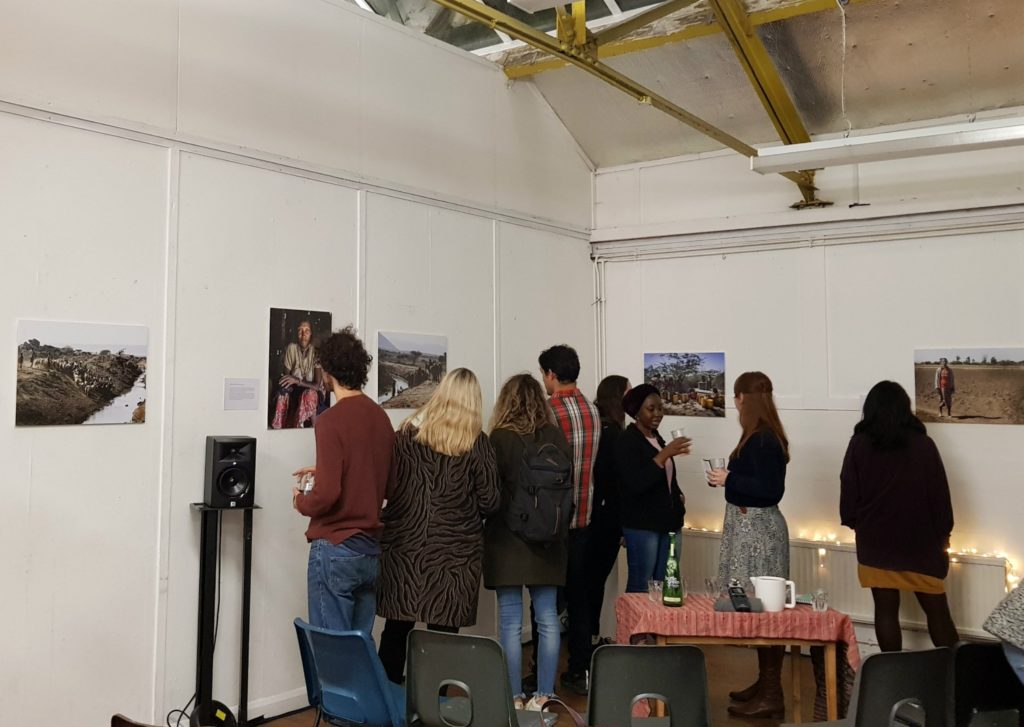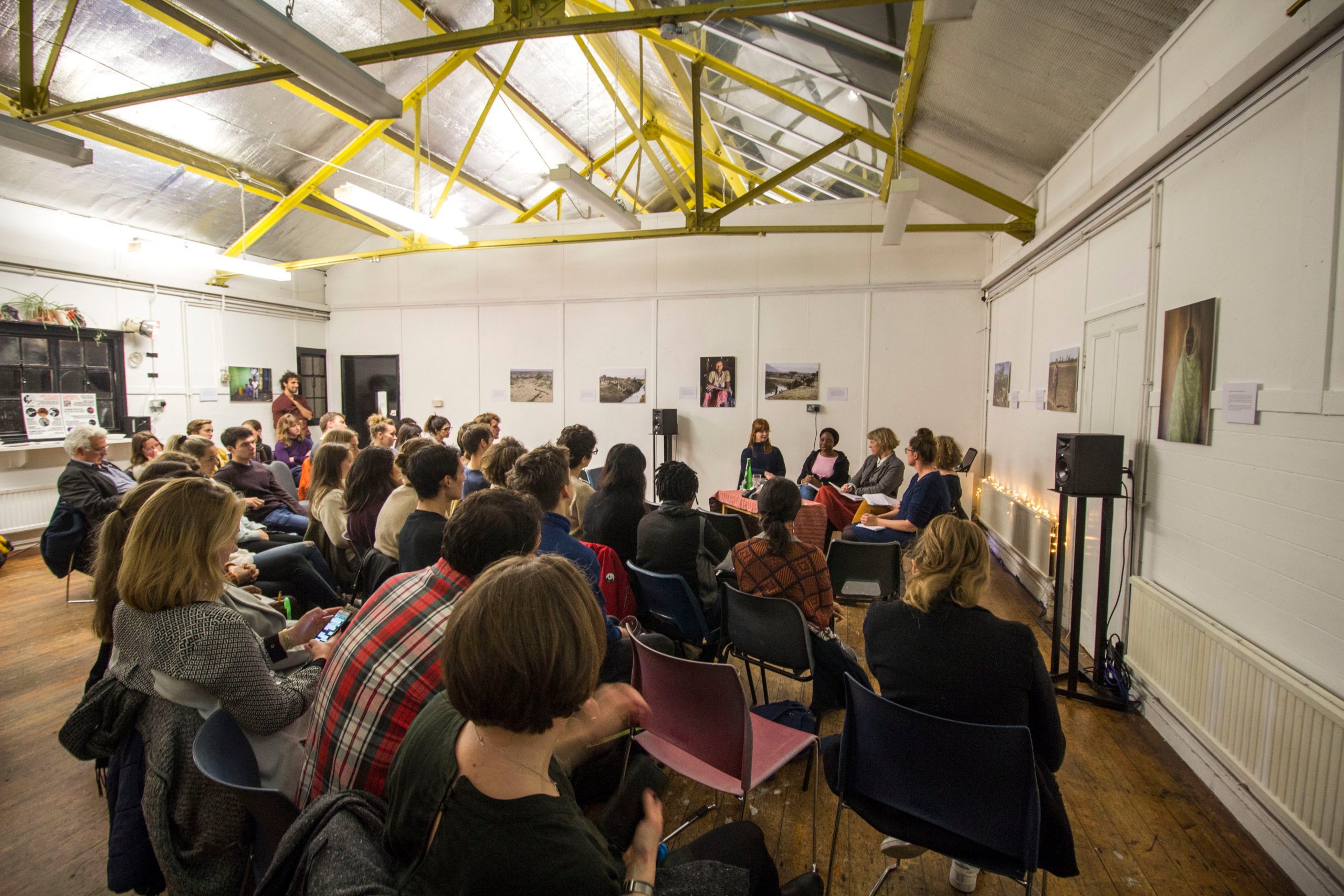Dr Catherine Grasham and Alice Chautard, University of Oxford
Public engagement with research is a hot topic right now. In November 2019, the ESRC had their annual public engagement festival of the social sciences – celebrating the contribution of the social sciences to our social, economic and political lives. Catherine Grasham and Alice Chautard hosted an event as part of the festival centred on their work on water security in Ethiopia. In this post, they reflect on the importance of public engagement with research alongside the challenging and rewarding realities of doing it.
The benefits of public engagement for researchers and society
When we talk about our work to family and friends, the term water security often results in confused stares. By the time we’ve uttered the words ‘risk’, ‘WASH’ or ‘transdisciplinarity’ to clarify ourselves, they’ve usually resigned to asking us about something else.
All researchers have ‘complex’ (but important) concepts that they use every day. They read related books and articles, listen to podcasts, have phone calls discussing them and meetings to try and define them. It’s too easy to forget that not everyone does that. This is one of many reasons why it is a good idea for researchers to engage with the public.
Public engagement can spark curiosity in science, inspire studies and careers, and even foster new relationships that can help facilitate research impact. It can also be an opportunity for researchers to get a (sometimes much needed) fresh perspective on the topics they study.
Researchers have a responsibility to engage with the general public. For research programmes, like ours, that are funded by the UK Government through the taxpayers’ money, it is important that we communicate our work back to the public to maintain trust in research.
This is particularly necessary now given the increasing scepticism and distrust towards scientific ‘experts’. Although there are different drivers to this trend, engaging with the public in compelling ways, avoiding jargon or overly complicated language, offers great opportunities to help restore trust in science, and for researchers to develop skills in this area.
The power of experiences and emotions to communicate science
Public engagement activities often have a heavy time burden and are still poorly valued and rewarded within academia. Communicating, simplifying and engaging around complex and often politicised issues, such as climate change or immigration, can seem particularly intimidating or threatening to our scientific integrity.
Luckily, there is excellent research around science communication that we can use as a guide to develop effective public engagement activities. A key principle is to meet our audiences where they are – that is framing our research in a way that is interesting or relevant to them, and sheering away from academic modes of communication.
We know that the human brain privileges experience over analysis. Stories, interactive experiences, and visuals, especially those that bring a human dimension, can be incredibly powerful; whereas graphs, scientific figures, facts and technical jargon often don’t resonate with the public.
Getting engagement: finding a hook and the right venue
We decided to put these findings into practice at our own ESRC-funded public engagement event on 5 November, where we showcased Catherine’s social research on water security in Ethiopia. We chose to frame it around ‘climate change and poverty’ rather than ‘water security’. In Ethiopia, water security issues – namely floods, droughts and poor water quality – interact strongly with climate change. Besides, as one of the defining issues of our time, shaping the way people live and the conversations they have, we knew that climate change would be a good anchor for our event.
The event consisted of a photography and surround sound exhibition. We highlighted personal stories from communities in Ethiopia’s Awash River basin with photographs that Alice took in November 2018. Accompanying the exhibition, we held a panel discussion with researchers and practitioners to explore the issues in more depth and discuss what we can do, at the individual, city and national level to address them. You can hear the recording (and find out more about the event) here.

Importantly, we chose to organise the exhibition in a community space in Oxford. In doing so, local groups can interact with the images, and find out more about the issues and our own work. The exhibition at Fusion Arts will run throughout November; during this time many community groups will use the space to organise other activities (i.e. elderly groups, dance and arts workshops etc.), so it is a real opportunity to reach a different audience.

Key learnings and reflections: challenges, benefits and looking ahead
The responsibility of leading public engagement activities should not fall solely on researchers. Current pressures in higher-education have been found to create an ‘epidemic’ of poor mental health. In our case, we found working collaboratively (Catherine as a researcher, Alice as a knowledge exchange professional and photographer) to be incredibly beneficial – not just for ensuring the successful delivery of the event, but also in terms of our mutual learning from each other’s expertise and skills.
There is a significant time burden to doing public engagement and, there is still little reward for it within academia. Given the societal importance of engaging and involving the public with our research, we think it is crucial to honestly reflect on ways it could be better valued and supported. The increasing recognition of public engagement within the Research Excellence Framework (REF), is encouraging. Beyond this, we think that integrating public engagement as a specific part of programme funding from the outset can go some way to making it more effective.
Research impact activities with more tangible outcomes are usually prioritised, in part because the impact of public engagement is so difficult to measure. We felt that our event was a success – bringing people together to engage in a critical conversation facilitated by human stories told in an inspiring way. However, changing societal behaviours and attitudes takes time – often decades – and can seldom be attributable to a single actor. Thankfully, there are efforts to find better ways to measure the impact of public engagement activities for researchers and society.
Overall, we found public engagement to be a mutually beneficial process. Not only did we have the opportunity to motivate the public with stories from our research but we also got inspiration for future work from the audience. Energised by these discussions, next year we plan to take our exhibition to Ethiopia, so for updates on that, watch this space!

